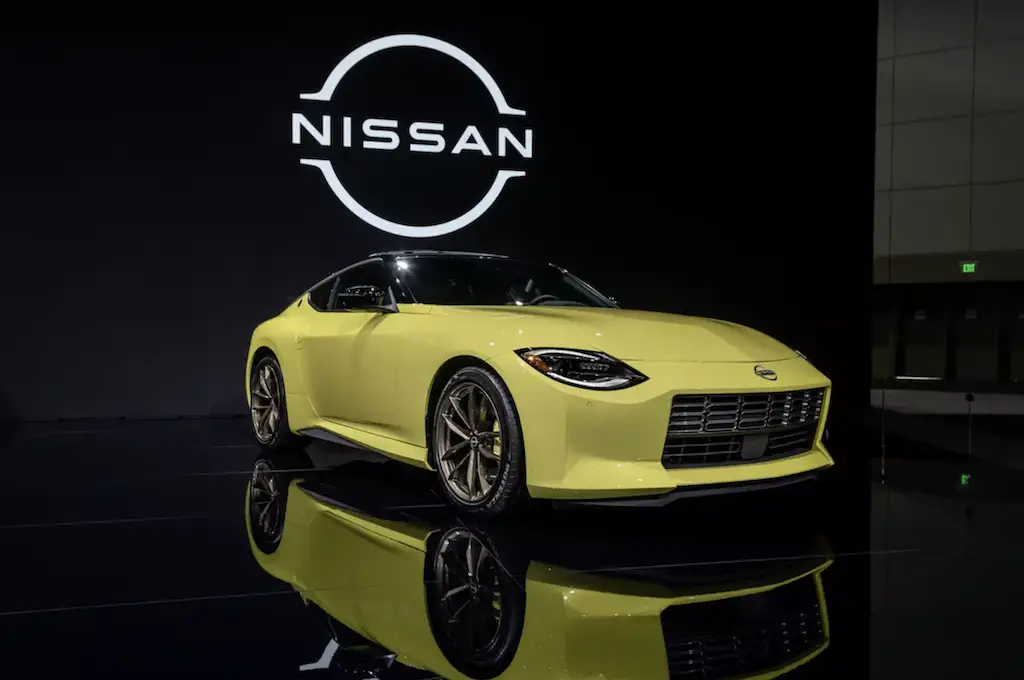The Nissan Z, even with the reviews just starting to show up, looks to be a smash hit. But that didn’t happen overnight. Nissan could’ve easily screwed it up, but a few commendable decisions prevented that from being the case. The result? One of the hottest sports car commodities of the 2020s.
Table of Contents
Styling
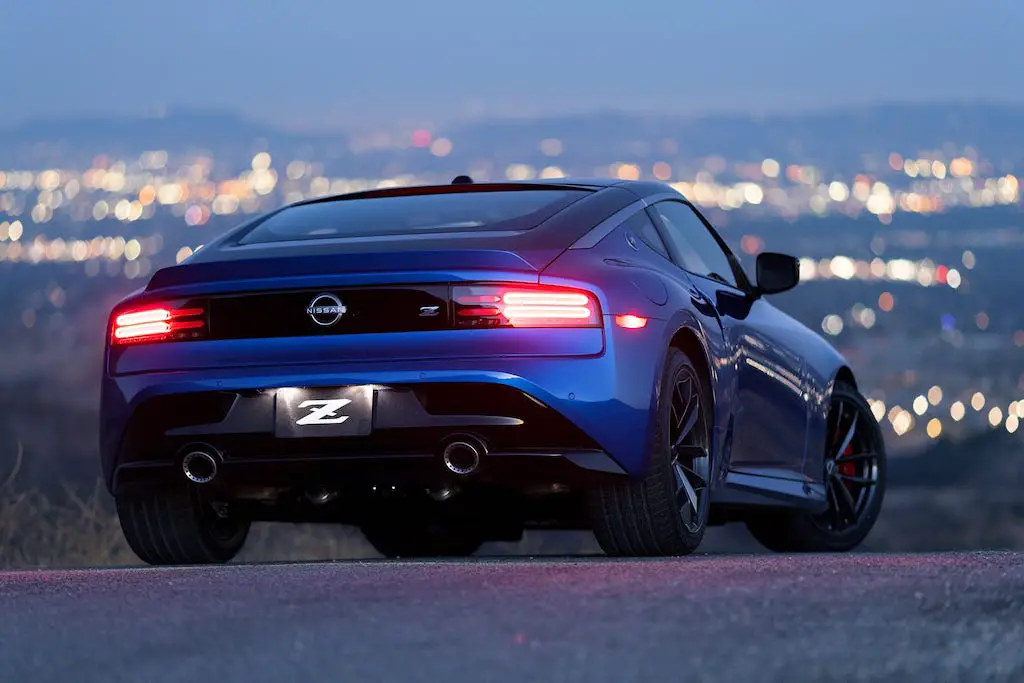
Nostalgia, especially for the 1980s/1990s, is BIG MONEY right now. Why? It represents the childhood years of the millennial demographic, and now that they are in their late 30s/early 40s, they have a little bit of money. With the styling, not only does it look great, but by taking cues from the Z32 300ZX and the original 240Z, it offers throwback elements that can play into the nostalgia and help drive sales.
Furthermore, the styling of the prototype that was first shown off to the public a year ago is NEARLY IDENTICAL to what the public can actually buy at a dealer, meaning people’s first impression was largely what they got. No Toyota FT-1/Supra or Pontiac Aztek syndrome here, Nissan promised a car that looked a certain way, and they delivered on that promise with the Nissan Z; building trust and new Nissan fans in the process.
Use of existing assets from its predecessor and other cars in the lineup
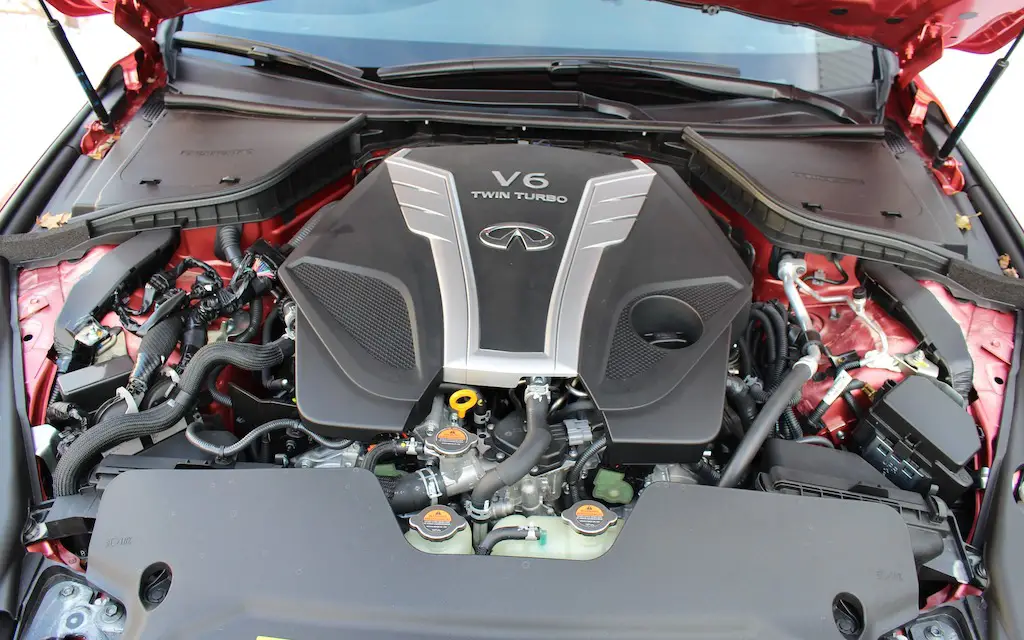
Nissan, for the last 10 years, has been in pretty bad shape. Under the leadership of former CEO Carlos Ghosn, the quality of products started to tank due to the influence of Renault on the company and the sharing of assets. By the mid-2010s, most Nissans, at least in America, were pretty much rental cars and rental cars ONLY, with the exception of the GT-R and 370Z. Interior quality and mechanical reliability notably declined between the mid 1990s and the early 2010s; a likely result of the restructuring efforts of the CEO known as “Le Cost Cutter.”
By the mid 2010s, Nissan had fallen far from grace, as its high-quality, performance oriented stable in Japan was replaced by economy cars with fisher-price interiors. All this means by the time of Ghosn’s unceremonious departure from Japan and Nissan in a Cello case, Nissan sales and finances were in pretty bad shape. They had some decent assets, but very little cash on hand to make the all new cars they needed.
So, they did the SMARTEST thing they could’ve done: reusing existing ingredients to make a new product to present to the market, i.e, the Taco Bell approach described by Regular Car Reviews.
For the Nissan Z, practically NOTHING was spent on the engine, as they took it straight from the Infiniti Q50 redsport. The 6 speed manual is carried over directly from the 370Z predecessor, and the automatic was co-developed with Mercedes-Benz (before they pulled out of the partnership and started making it themselves!). The platform too is the same basic design as the 370Z, though in a heavily updated form that shares only 20% of its parts with the 370Z.
This evolutionary approach is a smart, money-saving move that can work very well, as Ford Australia did this exact approach for nearly 50 years with their most iconic car, the Falcon. Not once was the Falcon ever fully updated or redesigned, yet nobody can say a 1966 XT Falcon shares anything like a 2016 FG Falcon, and fans still loved it. With the Z, having this additional continuity allows it to be a holdout for the analogue sports car in an era of increasingly monotone electric cars mandated by moronic government officials.
Making the car new where it counted
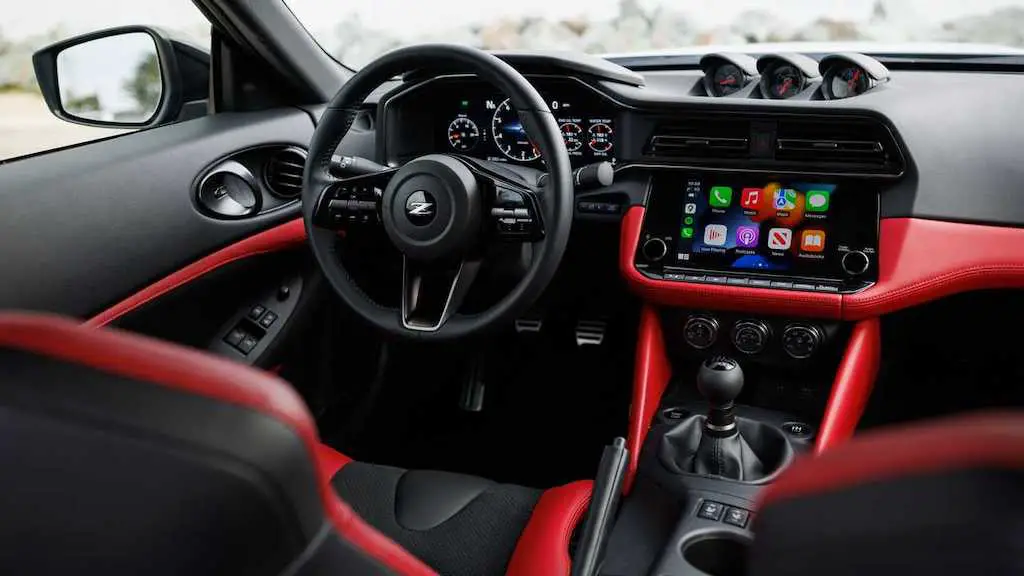
The biggest fear, however, is when a car carries over extensive assets from its predecessor, it will not feel sufficiently new. This is even more crucial, as the 370Z was very dated feeling in all the wrong ways by the time production ended in 2020, as production had started all the way back in 2009. However, Nissan was smart in that they put most of their money in making the Nissan Z look and feel all new, even if it had extensive parts-bin utilization underneath.
How did they do that? With a complete interior revamp. Modern infotainment with Apple CarPlay and Android Auto? Check. Easy to use? Check. Throwback 3 pod gauges to call to mind the the S30 Z from the 1970s? Check. They even have done color matching of the exterior and interior WELL. Usually that looks tacky but they were able to pull it off here, which is impressive. And since people are spending time in the car’s interior, this investment was a wise decision.
Pricing
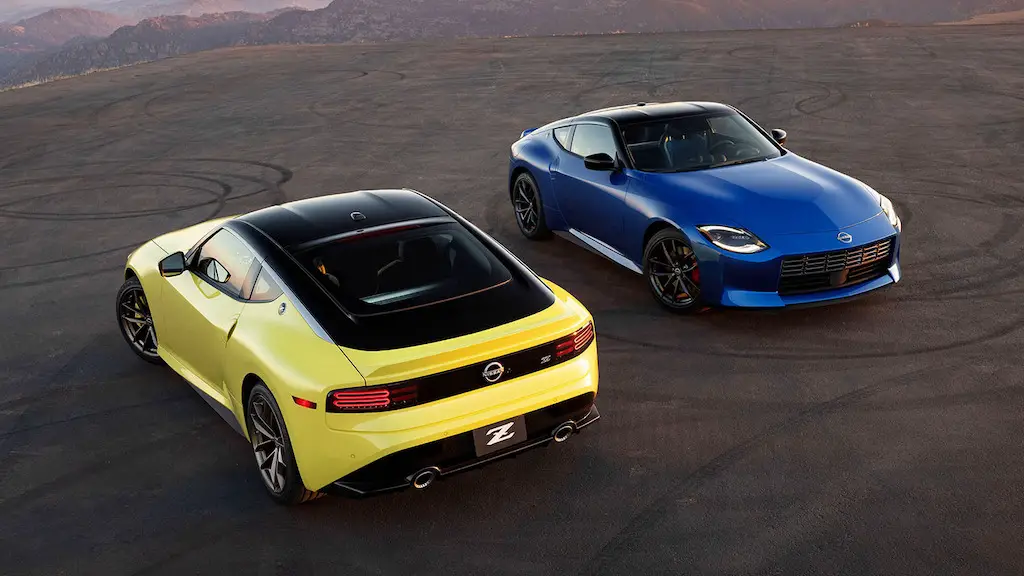
This is where the Nissan Z really has hit it out of the park, especially compared to its biggest rival in the space, the Toyota Supra. The base 2.0 liter model with 255 horsepower retails for $43,540 US, how much will the 400 horsepower Z retail for? Why, $39,990 of course! This not only makes the Supra seem like a joke (which it already kind of is to be honest, more on that here), but it makes the Z a competitive choice against the Ford Mustang GT, which starts at slightly less at $36,285. And for me, I would much rather go with the Z at that price, even if it is slightly more expensive?
Why? Because convincing me to buy an American-made car is difficult, especially one whose entire branding and dominance is tied to a 1960s era of American excpeitonalism (i.e. one more dominated by white people) that has positive associations for older people. That doesn’t resonate with me. And that will always be a harder sell to me compared to the Z.
Why? Even though the Z car has its roots in the 1970s, it was always a dark horse taking on the established American brands, and it helped to create the Japanese modified car scene in the U.S. And personally, I quite enjoy the Japanese car culture, so I can appreciate and respect the origins of where it came from.
The mustang? Yeah, I acknowledge its historical significance in creating the pony car genre, but it will never “do it” for me on an emotional level. So with such a close gap in pricing, for me, an updated modern Z coming out means I’m not forced into buying American if I want a 400+ horsepower new performance car for under $45k. And for that reason, I’d always chose the Z instead. Because a lot of people that like Japanese cars won’t buy something American.
Normal Production
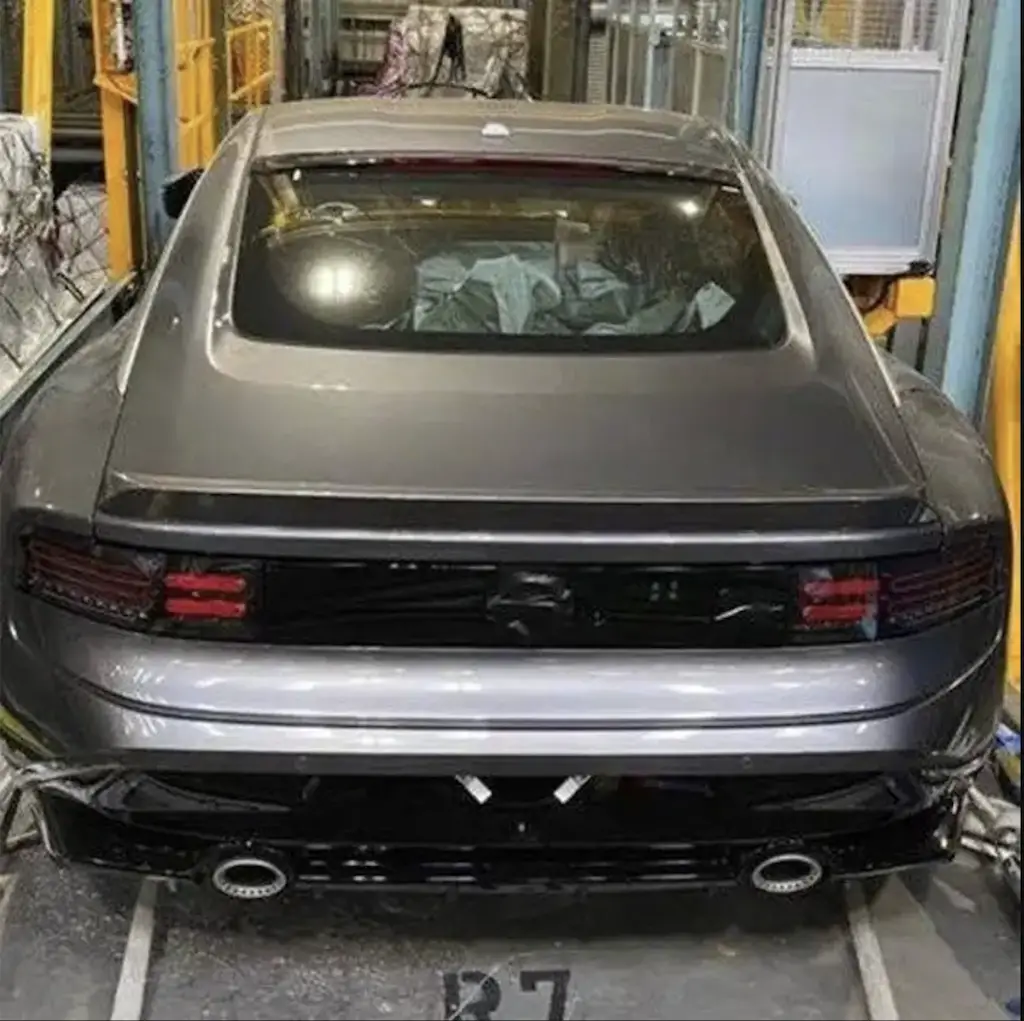
This may seem super obvious, but consider this. Toyota, with the GR Corolla, made one key mistake here by limiting production to 6500 units for the year. This is foolish, even in the era of supply chain disruptions. When you have this much hype, you have to translate that into sales, and artificially limiting production is just an invitation for dealers to slap on huge markups and do EVEN MORE damage to your brand’s reputation.
Nissan, with the Z, has announced nothing of the sort, which means anyone that wants a Z should be easily able to get one, relative to any other car and given the current situation at the time of writing, of course. And actually getting the car is kind of important for driving sales and interest, as hype can only get you so far!
Summary
The Nissan Z is a car that I would buy. It’s not perfect, it’s based on an older chassis, but I don’t care. It has all the right things of older cars and newer cars in one package, and that is a balance that few automakers strike well (I’m looking at you, Land Rover Defender). What do you think? Are you pumped for the 2023 Nissan Z? Would you buy one? Let me know in the comments below and consider following me on TikTok for new content EVERY DAY!
